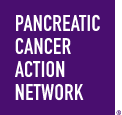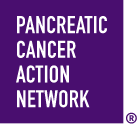Grantee: Jennifer Tseng, MD
Institution: University of Massachusetts Memorial Medical Center
Project Title: Development of a Malignancy Prediction Rule for Cystic Lesions of the Pancreas
Award: 2006 Samuel Stroum – Pancreatic Cancer Action Network – ASCO Young Investigator Award
Award Period: July 1, 2006 – June 30, 2007
Amount: $35,000
Click here to download Dr. Tseng’s Grant Snapshot (pdf)

Biographical Highlights
Dr. Tseng received her MD from t the University of California in San Francisco, where she won the dean’s prize in research at the Howard Hughes Institute. She completed a five-year clinical residency at Massachusetts General Hospital in Boston and conducted research in gene therapy at Harvard Medical Center and University of Texas MD Anderson Cancer Center. Dr. Tseng is currently an Assistant Professor of Surgery and heads the HYPERLINK "http://www.umassmed.edu/surgery/SOAR.aspx" Surgical Outcomes Analysis and Research Group at the University of Massachusetts, where she focuses on improving survival and quality of life for patients with pancreatic cancer through research that uses national and institutional databases and internet-based tools.
Project Description
The funded project aims to establish a predictive model that accurately assesses the risk of malignancy in patients with cystic lesions of the pancreas. There are three specific aims: (1) generate a prediction rule for the risk of malignancy in patients with cystic lesions of the pancreas; (2) validate the malignancy prediction rule; and (3) assess the utility of the rule by using a decision analysis model to estimate the change in overall patient life expectancy with application of the prediction rule as compared to observed treatment.
Results/Outcomes
Using data from 650 pancreaticoduuodenectomies performed at a major cancer center, the study showed that surgeons had significant improvements in surgical outcomes after 60 cases. After this threshold level, significant improvements were observed, for example, in operative time, blood loss, hospital stay, and margin-negative resections. This demonstrates that the learning curve for pancreatic surgery is both complex and prolonged. Data also were analyzed from the Nationwide Inpatient Sample (a 20% stratified sample of US hospitals), which showed that the operative mortality for patients undergoing pancreatectomy for tumors declined from 1998-2003 (7.8% to 4.6%, p<.001 by trend analysis). Resections conducted at low volume (<5/year) and medium volume (5-18/year) centers had significantly higher mortality compared to high volume (>18/year) centers. The regionalization of pancreatic surgery contributed to approximately 25% of the observed overall improvement in perioperative mortality from during this time period.
Next Steps
Efforts will continue to create a multi-institutional database to study cystic tumors and pancreatic malignancy. Decision analysis models will be developed to aid medical decision-making for patients and clinicians to maximize survival and quality of life.
Publications Related to Funded Project
McPhee JT, Hill JS, Whalen GF, Zayruzny M, Litwin DE, Sullivan ME, Anderson FA, Tseng JF. Perioperative mortality for pancreatectomy: a national perspective. Annals of Surgery, 2007; 246(2):246-253.
http://www.annalsofsurgery.com/pt/re/annos/abstract.00000658-200708000-00013.htm;jsessionid=LjTS1644yYn0tpwKmYKwpJxpLg410PlDx2cpG2LTwyyMymRHngrS!-1052912739!181195629!8091!-1?index=1&database=ppvovft&results=1&count=10&searchid=1&nav=search
Tseng JF, Pisters PW, Lee JE, Wang H, Gomez HF, Sun CC, Evans DB. The learning curve in pancreatic surgery. Surgery, 2007;141(5):694-701.
http://www.ncbi.nlm.nih.gov/pubmed/17383522?ordinalpos=1&itool=EntrezSystem2.PEntrez.Pubmed.Pubmed_ResultsPanel.Pubmed_DiscoveryPanel.Pubmed_RVAbstractPlus
Smith JK, McPhee JT, Hill JS, Whalen GF, Sullivan ME, Litwin DE, Anderson FA, Tseng JF. National outcomes after gastric resection for neoplasm. Arch Surg, 2007;142(4):387-393.
http://archsurg.ama-assn.org/cgi/reprint/142/4/387





